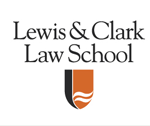When is a 'Rule' a Regulation? Marking a Clear Line between Nonlegislative Rules and Legislative Rules
Document Type
Article
Publication Title
Administrative Law Review
Journal Abbreviation
Admin. L. Rev.
Abstract
This article begins by noting the difficulty courts have had in trying to determine whether a rule adopted without notice and comment, which the agency claims is an interpretive rule or statement of policy, is really such a rule or is instead a legislative rule that is invalid because it failed to go through notice and comment. This judicial dilemma occurs in two circumstances: one is when a person wishes to establish the invalidity of a rule on procedural grounds, asserting that because the agency failed to engage in notice and comment on the rule, the rule must be invalid, but the agency responds that the rule is interpretive or is a statement of policy exempt from notice and comment; the other circumstance is when a person challenges an agency action on the grounds that is contrary to an agency 'rule,' but the agency responds that the rule is not 'legislative' and therefore does not bind the agency. In both circumstances, the agency wishes to show that the rule is non-legislative, while the private party wishes to show the rule is legislative. The article proposes a simple test to replace the multiple and confusing tests currently used by courts, which provide little predictability to outcome and little guidance to agencies. That test is simply that if the agency did not use notice-and-comment rulemaking and claims the rule is interpretive or is a statement of policy, then the rule is a non-legislative rule exempt from notice and comment. Responding to the expected criticism that this would enable agencies to evade notice-and-comment rulemaking even while making substantive policy, the article emphasizes that currently courts focus on the wrong issue - the procedural validity of the rule, rather than focusing on the substantive validity of the rule. The article then provides a number of examples drawn from recent or historic cases to show that such a new approach would safeguard against agency abuse, while providing a clear and predictable guide to agencies. The article concludes by demonstrating some circumstances where the current judicial approach results in anomalous results.
First Page
659
Last Page
672
Publication Date
2002
Recommended Citation
William Funk,
When is a 'Rule' a Regulation? Marking a Clear Line between Nonlegislative Rules and Legislative Rules,
54
Admin. L. Rev.
659
(2002).
Available at:
https://lawcommons.lclark.edu/faculty_articles/221

